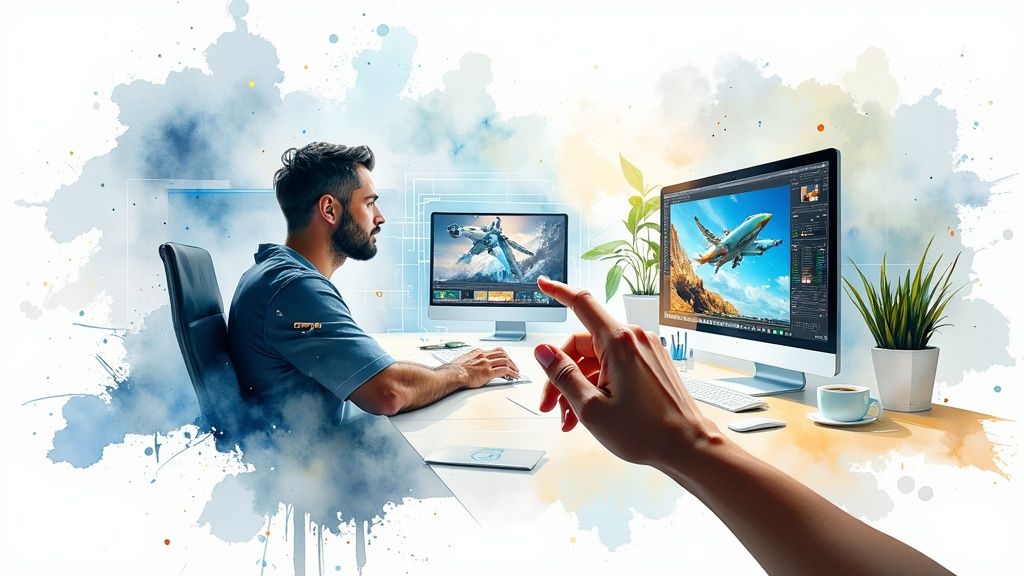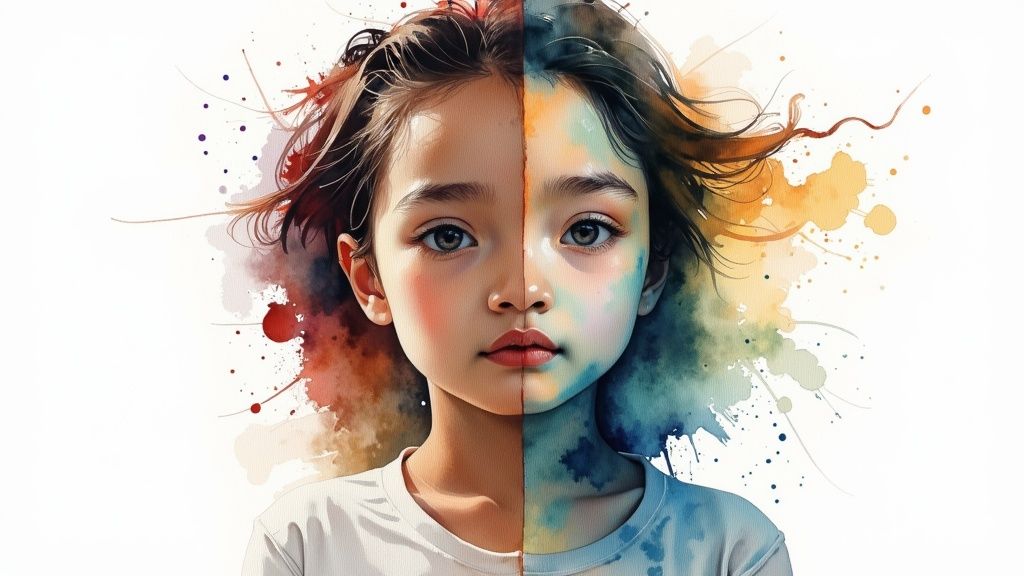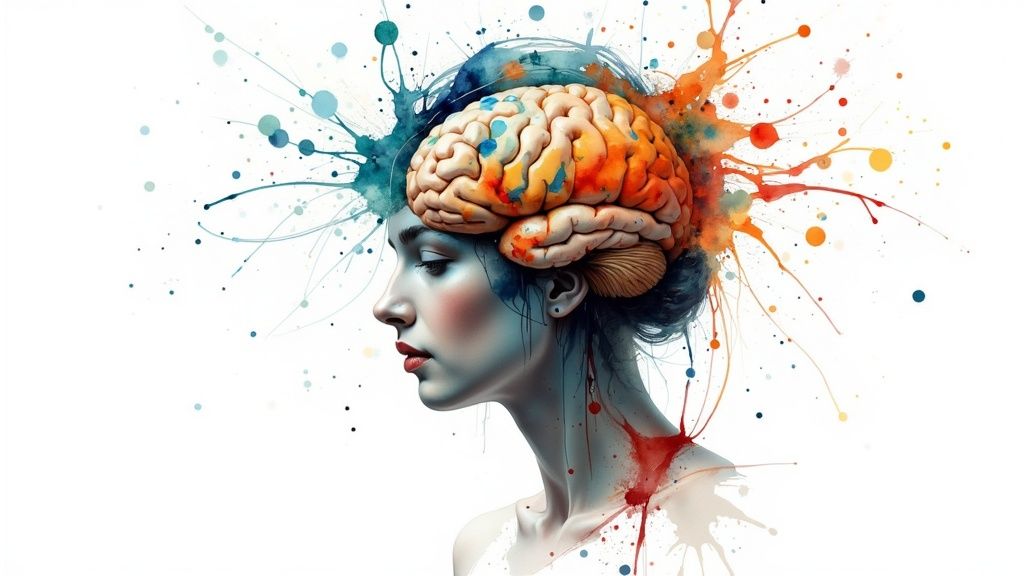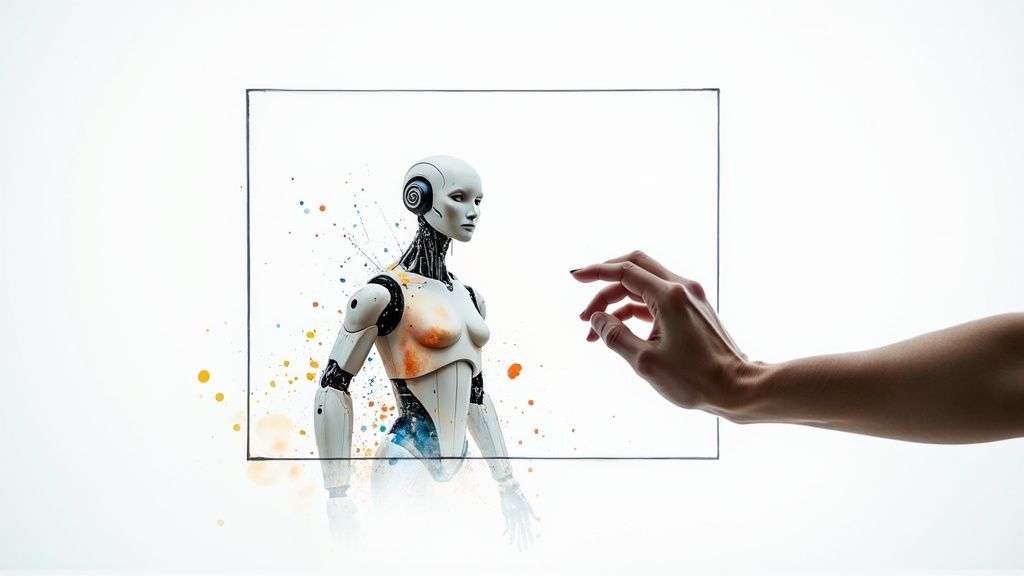The Rise of AI Video Editing

The world of video editing is changing dramatically. This change is largely due to the rapid advancements in artificial intelligence, bringing powerful tools that are reshaping how videos are made and watched. AI video editing is no longer a futuristic dream but a current reality, empowering creators to produce high-quality content more efficiently. This shift opens up exciting new possibilities for storytelling and audience engagement. So, how is AI changing the video editing game?
Automating the Tedious, Unleashing the Creative
One of the most significant ways AI impacts video editing is through automation. AI algorithms can analyze footage and automatically handle tedious tasks. For instance, AI can cut unnecessary segments, add transitions, and even stabilize shaky footage. This automation frees editors from technical work, allowing them to concentrate on more creative aspects. This means editors can spend more time crafting compelling narratives and refining the visual aesthetic. As a result, the process becomes less about technical execution and more about artistic vision. Imagine having a dedicated assistant handling all the routine tasks, leaving you free to bring your creative vision to life. This is the potential of AI in video editing.
Enhancing Video Quality with Intelligent Algorithms
AI is also pushing the boundaries of video enhancement. AI-powered tools can significantly improve video quality automatically. These algorithms can upscale resolution, remove noise, and correct color imbalances. They can even enhance details and sharpness, making older or low-quality footage look remarkably better. This leads to a significantly improved viewing experience without requiring extensive manual adjustments. For example, consider restoring old family videos. AI can revitalize these precious memories, making them clearer and more vibrant. This improved quality allows us to cherish these moments in a whole new light. But the impact of AI extends beyond restoration and enhancement.
The Future of Video Editing is Intelligent
The integration of AI in video editing isn't just about automation and enhancement; it's about empowering creativity and accessibility. These AI-powered tools are making video editing more accessible to a wider range of users. This enables anyone with a story to tell to create compelling video content. As AI continues to evolve, we can expect even more innovative features and tools to emerge. These advancements will further transform video production, democratizing video creation and ushering in a new era of visual storytelling. To learn more about this exciting evolution, check out our article about revolutionizing video editing and how AI is transforming the landscape. This exploration will provide a deeper understanding of the transformative power of AI in video production.
Popular AI Video Editing Tools
The field of AI video editing offers a diverse range of tools, each with its own strengths and weaknesses. Choosing the right software depends on your specific needs, technical expertise, and budget. Let's explore some of the leading AI-powered video editing tools available today. This overview will help you navigate the options and find the best fit for your projects.
AI Video Editing Powerhouses
-
Pictory AI: This platform excels at transforming text-based content, such as blog posts and scripts, into engaging videos. This feature is particularly useful for publishers looking to repurpose written content. For example, Pictory AI can automatically create short, shareable videos from articles, complete with visuals and music. This streamlines content creation, allowing publishers to expand their reach. This efficiency makes it easier to connect with a wider audience.
-
Synthesia: Known for its AI avatar technology, Synthesia enables users to create videos with realistic virtual presenters. This is ideal for training videos, explainer content, or any video requiring a human-like presence without actual filming. Imagine needing a video spokesperson who can speak multiple languages. Synthesia can generate this effortlessly, saving valuable time and resources. This versatility makes it a powerful tool for global communication.
-
RunwayML: This robust platform offers a suite of AI-powered tools for video editing. These tools include features like object removal, style transfer, and even automated rotoscoping. These advanced capabilities allow editors to achieve complex effects easily. For example, removing an unwanted object from a scene, traditionally a time-consuming process, can be done with a few clicks in RunwayML. This simplification empowers editors to focus on the creative aspects of their work.
User-Friendly AI Video Editing Options
-
Kapwing: Kapwing provides a user-friendly online platform with a variety of AI-powered video editing tools. This platform is particularly accessible to beginners. Features like automatic subtitle generation and background removal simplify common editing tasks. This means that anyone, regardless of their technical skills, can create professional-looking videos. For instance, adding subtitles, often a tedious task, becomes effortless with Kapwing's automated tools.
-
Descript: This innovative tool utilizes a text-based interface for video editing, making it intuitive and easy to learn. Imagine editing a video simply by editing a transcript. Descript makes this possible, changing how we interact with video editing software. Furthermore, its AI-powered features can transcribe audio and even generate realistic voiceovers, expanding the possibilities for video creation.
-
Adobe Premiere Pro (with AI features): While not exclusively an AI video editing tool, Premiere Pro incorporates increasingly sophisticated AI features. These features include scene detection and automated color correction. These additions enhance the efficiency of professional workflows. This means editors can concentrate on the more creative aspects of their work. This integration of AI within a familiar editing platform bridges the gap between established workflows and the power of AI.
These are just a few examples of the rapidly evolving landscape of AI video editing. As AI technology progresses, we can anticipate even more powerful and accessible tools. These tools will further democratize video production, empowering creators of all skill levels. This evolution will continue to reshape the future of video creation, making it easier than ever to bring your vision to life.
Automated Video Enhancement

While AI video editing tools offer a lot, automated video enhancement is truly transformative. Here, the power of AI shines, elevating video quality with minimal effort. Think of it as having a virtual film restoration expert at your disposal, ready to revitalize your footage with intelligent algorithms. This accessibility brings professional-level enhancement to a broader audience.
Enhancing Resolution and Clarity
AI excels at resolution enhancement. Traditional upscaling often results in blurry or pixelated footage. However, AI-powered upscaling algorithms analyze video frames and intelligently "fill in the gaps." This creates a much sharper, more detailed image. For example, imagine transforming an old standard-definition video into a crisp, high-definition masterpiece. This is possible with AI, reconstructing detail with remarkable accuracy. This means even older video content can get a new lease on life, becoming suitable for modern displays and platforms.
Removing Noise and Imperfections
AI is incredibly effective at removing noise and imperfections from video. Similar to a skilled photo editor removing blemishes from a still image, AI algorithms identify and eliminate noise, grain, and artifacts in video. This results in cleaner, more polished footage, free from distracting visual clutter. This is especially useful for footage shot in low light or with older cameras. Consequently, videos previously unusable due to poor quality can be restored to a professional standard.
Color Correction and Grading with AI
AI-powered color correction and grading tools are also game-changers. These tools analyze footage and automatically adjust color balance, saturation, and contrast for optimal visual impact. They can even mimic specific film stocks or create stylized color grades, giving videos a unique aesthetic. This process, traditionally requiring a skilled colorist, is now automated by AI. For instance, a dull video can be transformed into a vibrant, cinematic experience with a few clicks. This democratizes advanced post-production techniques, empowering creators to tell their stories with stunning visuals.
Smart Content Creation

Automated video enhancement is a major step forward, but AI's impact on video goes even further. AI is transforming content creation itself, offering tools that intelligently generate and adapt video content. This opens up exciting possibilities for producing engaging and dynamic videos with unprecedented efficiency. These AI-powered tools aren't just about making videos; they're about creating smarter, more effective content.
AI-Powered Scriptwriting and Storyboarding
One compelling aspect of smart content creation is AI's ability to assist with scriptwriting and storyboarding. AI algorithms can analyze text-based content, like articles or blog posts, and automatically generate video scripts. Furthermore, AI can help create dynamic storyboards, visualizing the video's flow before filming begins. This is like having a virtual writing partner and pre-production team, helping to shape your video's narrative. This streamlines the creative process and ensures well-structured, engaging video content.
Automated Video Generation from Text
Beyond scripts and storyboards, AI can generate entire videos automatically from text. Imagine turning a written article into a compelling video with minimal effort. This is now a reality, thanks to AI-powered video generation tools. These tools select relevant visuals, add music, and even generate voiceovers, creating a complete video from a text document. This saves time and resources, allowing publishers to repurpose existing content in engaging new formats. This means a single piece of content can be easily adapted for various platforms and audiences.
Dynamic Content Adaptation and Personalization
AI also enables dynamic content adaptation and personalization. AI algorithms analyze viewer data and preferences to create customized video experiences. For example, AI can generate different video versions tailored to specific demographics or interests, maximizing audience engagement. This personalized approach improves the viewing experience and boosts the effectiveness of video marketing campaigns. This allows businesses to create targeted, impactful video content that resonates with their audience.
The Future of Video: AI-Driven Creativity
As AI technology advances, we can expect even more sophisticated tools for smart content creation. AI in video editing is not just about automating tasks; it's about empowering creativity and unlocking new storytelling possibilities. These advancements promise a future where video creation is more accessible, efficient, and impactful. This means the future of video content isn't just about what we see but also how it's created and connects with us personally.
Future of Video Editing

Smart content creation and automated enhancement are only the beginning. The future of video editing is being shaped by AI, promising even more powerful and accessible tools. This evolution will continue to redefine how we create and experience video content. The possibilities are vast, paving the way for a new era of visual storytelling.
The Rise of Hyper-Personalization
One exciting development is the increasing personalization of video content. AI algorithms will analyze viewer data to create highly customized video experiences. Imagine a video that adapts its narrative, pacing, and visuals based on the viewer's interests. This hyper-personalization will transform how we consume video content, making it more engaging and relevant. This also opens exciting possibilities for interactive storytelling, where viewers influence the narrative.
AI-Powered Predictive Editing
Another area of innovation is predictive editing. AI will anticipate the editor's next move, suggesting edits, transitions, and effects based on context. This is like having an intuitive assistant who understands your creative vision. This will not only speed up the editing process but also allow editors to explore new creative avenues. This allows creators to focus on the overall vision while AI handles the details.
The Democratization of VFX
AI is also set to democratize access to visual effects (VFX). Traditionally, creating high-end VFX required specialized software, expensive hardware, and skilled artists. AI is making these tools more accessible to everyone. Imagine creating stunning visual effects with a few clicks, regardless of your technical expertise. This empowers independent filmmakers and content creators to achieve professional results, blurring the lines between amateur and professional video production. This means anyone can create visually compelling content that rivals big-budget productions.
Ethical Considerations and the Human Element
As AI becomes more integral to video editing, we must address ethical considerations. Concerns about copyright, deepfakes, and job displacement need careful attention. However, it's important to remember AI is a tool. Its ultimate impact depends on how we use it. The future of video editing is not about replacing human creativity, but enhancing it. AI empowers creators to achieve their vision more efficiently, allowing them to focus on the artistry and storytelling that make video so powerful. This collaborative approach ensures the human element remains central to video creation, even as technology evolves.
Conclusion
This exploration of AI in video editing reveals a dynamic and rapidly evolving field. From automating tedious tasks to enhancing quality and generating new content, AI is revolutionizing video production. This means creators of all skill levels have access to powerful tools previously only available to professionals. For example, AI can automatically remove objects from scenes, enhance resolution, and generate voiceovers – tasks that once required significant time and expertise. This democratization opens exciting new possibilities for storytelling and communication.
The Power of AI in Video Editing
AI in video editing offers significant advantages, including:
- Increased Efficiency: Automates time-consuming tasks, freeing editors for creative work.
- Enhanced Quality: Improves resolution, removes noise, and optimizes color for polished videos.
- Accessibility: Makes video editing easier for beginners and professionals.
- Smart Content Creation: Assists with scriptwriting, storyboarding, and even generates videos from text.
Embracing the Future of Video
However, we must consider the ethical implications of AI in video editing. Issues like copyright, deepfakes, and job displacement require responsible address. As we embrace AI's power, we must also prioritize ethical practices and ensure its positive use. The human element remains essential. AI is a powerful tool, but human vision and storytelling bring videos to life.
The future of video editing is undoubtedly linked with AI. As AI technology continues to advance, we can expect even more innovative and powerful tools. This means the possibilities for creative expression are vast, and we're only scratching the surface of AI's potential in video production. This evolution promises a future where video creation is more accessible, efficient, and impactful. By embracing these advancements responsibly, we can unlock a new era of visual storytelling and communication.
Ready to experience the future of video creation? Aeon is an innovative video creation platform designed for publishers. Use the power of AI to transform your text, video, or audio content into engaging videos with minimal human intervention. Visit Aeon today and start creating stunning videos with ease.